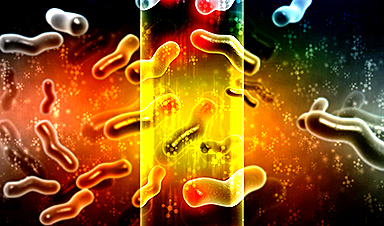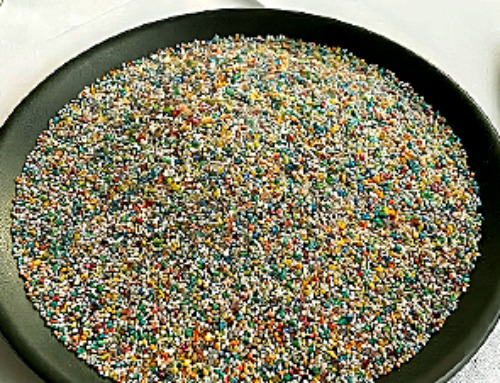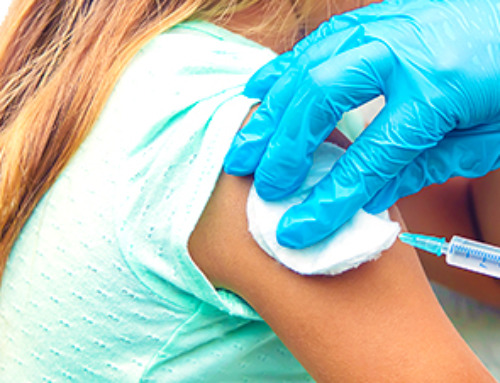Research into the causes of Alzheimer's is not yet complete. Now a new study shows that head trauma can activate herpes viruses and promote the disease.
Frankfurt am Main – As a neurodegenerative disease, dementia often causes a lot of suffering for those affected and their relatives. While short-term memory and memory are initially impaired, dementia often progresses in such a way that it also deprives those affected of content imprinted in their long-term memory. In the course of the disease, those affected lose more and more of what they have learned, until in the course of a severe course of dementia there can even be a complete loss of perception. This is often accompanied by an increased level of care and need for care of those affected.
As an umbrella term, dementia includes around 50 clinical pictures that are associated with a reduction in memory and mental performance. Its most common form is Alzheimer's disease, which accounts for around two-thirds of all dementia cases. Although exercise, a balanced diet and mental training can prevent it, there are also a number of risk factors that can promote Alzheimer's. And a recently published British study now suggests a surprising connection for these.
Study shows connection between herpes viruses and head injuries as risk factors for Alzheimer's dementia
The development of Alzheimer's dementia is an important question in research and as such the subject of numerous dementia research studies, but its causes are still not fully understood. One thing is clear: In those affected, nerve cells in the brain deteriorate, which further impair their mental performance and perception over the course of the disease.

At present, Alzheimer's research assumes that deposits of two toxic proteins are largely responsible for the breakdown of nerve cells in those affected: clumps of amyloid-beta and tau fibrils. However, herpes viruses and head injuries, such as concussions in particular, also seem to have a risk of promoting the development of Alzheimer's dementia under certain circumstances.
Head injuries "awaken" herpes viruses – and release proteins that promote Alzheimer's disease
At least this is the central finding of a British study that researchers from the Institute for Population Ageing at the University of Oxford worked out together with members of the Universities of Manchester and Tufts. They published their results in the journal Science Signaling. As the researchers discovered, herpes viruses can survive a lifetime in the human body and lead to the dreaded deposits in the brain if they are "awakened", i.e. reactivated, in a certain way.
Herpes viruses that lie dormant in the body for a long time could be "awakened" by vibrations and injuries to the head, for example, as the scientists pointed out as the next important result of their study in Science Signaling. They reached it by exposing a biotechnologically generated model of human brain tissue to a series of light shocks.
They observed how light shocks activated the dormant herpes viruses. "This reactivation triggered inflammation, the formation of beta-amyloid plaques and the formation of harmful tau proteins," summarized Leslie K. Ferrarelli, who was involved in the study as a researcher. And because these proteins are known to initiate neurodegenerative processes in the brain, including Alzheimer's dementia, Ferarelli adds: "The results establish a direct link between two risk factors in a mechanism that may contribute to dementia."
Head injuries have long been known to science as a risk factor for dementia
While the researchers have now made an important new finding with the connection between head injuries and a reactivation of herpes viruses as the cause of Alzheimer's dementia, effects on the skull have long been identified as a risk factor for dementia. Chronic traumatic encephalopathy (CTE) even exists as a clinical picture that classifies a rare form of dementia: cognitive and motor disorders as well as behavioral and personality changes that occur as a result of regular head injuries.
It was first described by US researchers in the 1920s as "punch drunk syndrome". The reason for the study at that time was a sometimes noticeable limitation of the cognitive performance of professional boxers, who are known to be exposed to a high number of blows to the head during training or competitions.
Because contact sports in particular, and thus numerous team sports such as football or basketball in addition to those from martial arts, offer an increased potential for head injuries, the Alzheimer Research Initiative e.V. association warns on its website to protect the head during sports and to avoid unnecessary vibrations – even minor ones. And not only because there is no therapy for CTE sufferers yet, but because head injuries can also promote Alzheimer's dementia. For this reason, older people are also recommended to exercise increased caution against falls. (FH)
News
Researchers highlight five pathways through which microplastics can harm the brain
Microplastics could be fueling neurodegenerative diseases like Alzheimer's and Parkinson's, with a new study highlighting five ways microplastics can trigger inflammation and damage in the brain. More than 57 million people live with dementia, [...]
Tiny Metal Nanodots Obliterate Cancer Cells While Largely Sparing Healthy Tissue
Scientists have developed tiny metal-oxide particles that push cancer cells past their stress limits while sparing healthy tissue. An international team led by RMIT University has developed tiny particles called nanodots, crafted from a metallic compound, [...]
Gold Nanoclusters Could Supercharge Quantum Computers
Researchers found that gold “super atoms” can behave like the atoms in top-tier quantum systems—only far easier to scale. These tiny clusters can be customized at the molecular level, offering a powerful, tunable foundation [...]
A single shot of HPV vaccine may be enough to fight cervical cancer, study finds
WASHINGTON -- A single HPV vaccination appears just as effective as two doses at preventing the viral infection that causes cervical cancer, researchers reported Wednesday. HPV, or human papillomavirus, is very common and spread [...]
New technique overcomes technological barrier in 3D brain imaging
Scientists at the Swiss Light Source SLS have succeeded in mapping a piece of brain tissue in 3D at unprecedented resolution using X-rays, non-destructively. The breakthrough overcomes a long-standing technological barrier that had limited [...]
Scientists Uncover Hidden Blood Pattern in Long COVID
Researchers found persistent microclot and NET structures in Long COVID blood that may explain long-lasting symptoms. Researchers examining Long COVID have identified a structural connection between circulating microclots and neutrophil extracellular traps (NETs). The [...]
This Cellular Trick Helps Cancer Spread, but Could Also Stop It
Groups of normal cbiells can sense far into their surroundings, helping explain cancer cell migration. Understanding this ability could lead to new ways to limit tumor spread. The tale of the princess and the [...]
New mRNA therapy targets drug-resistant pneumonia
Bacteria that multiply on surfaces are a major headache in health care when they gain a foothold on, for example, implants or in catheters. Researchers at Chalmers University of Technology in Sweden have found [...]
Current Heart Health Guidelines Are Failing To Catch a Deadly Genetic Killer
New research reveals that standard screening misses most people with a common inherited cholesterol disorder. A Mayo Clinic study reports that current genetic screening guidelines overlook most people who have familial hypercholesterolemia, an inherited disorder that [...]
Scientists Identify the Evolutionary “Purpose” of Consciousness
Summary: Researchers at Ruhr University Bochum explore why consciousness evolved and why different species developed it in distinct ways. By comparing humans with birds, they show that complex awareness may arise through different neural architectures yet [...]
Novel mRNA therapy curbs antibiotic-resistant infections in preclinical lung models
Researchers at the Icahn School of Medicine at Mount Sinai and collaborators have reported early success with a novel mRNA-based therapy designed to combat antibiotic-resistant bacteria. The findings, published in Nature Biotechnology, show that in [...]
New skin-permeable polymer delivers insulin without needles
A breakthrough zwitterionic polymer slips through the skin’s toughest barriers, carrying insulin deep into tissue and normalizing blood sugar, offering patients a painless alternative to daily injections. A recent study published in the journal Nature examines [...]
Multifunctional Nanogels: A Breakthrough in Antibacterial Strategies
Antibiotic resistance is a growing concern - from human health to crop survival. A new study successfully uses nanogels to target and almost entirely inhibit the bacteria P. Aeruginosa. Recently published in Angewandte Chemie, the study [...]
Nanoflowers rejuvenate old and damaged human cells by replacing their mitochondria
Biomedical researchers at Texas A&M University may have discovered a way to stop or even reverse the decline of cellular energy production—a finding that could have revolutionary effects across medicine. Dr. Akhilesh K. Gaharwar [...]
The Stunning New Push to Protect the Invisible 99% of Life
Scientists worldwide have joined forces to build the first-ever roadmap for conserving Earth’s vast invisible majority—microbes. Their new IUCN Specialist Group reframes conservation by elevating microbial life to the same urgency as plants and [...]
Scientists Find a Way to Help the Brain Clear Alzheimer’s Plaques Naturally
Scientists have discovered that the brain may have a built-in way to fight Alzheimer’s. By activating a protein called Sox9, researchers were able to switch on star-shaped brain cells known as astrocytes and turn them into [...]





















